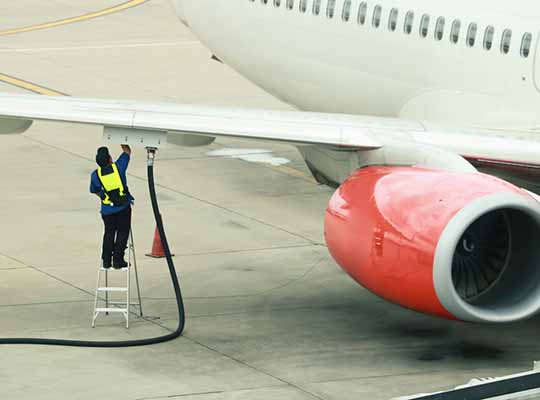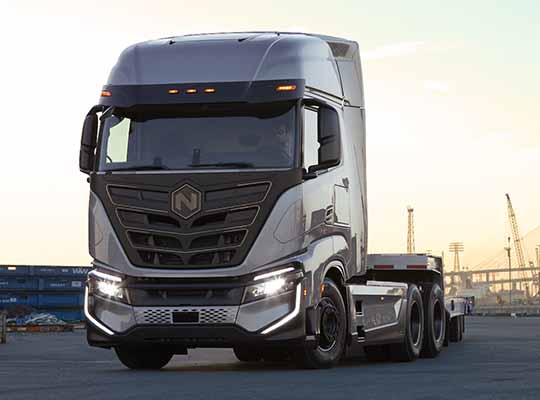VANCOUVER — The global aircraft fuel systems market size was USD 9.13 Billion in 2020. Rising demand for Unmanned Aerial Vehicles (UAVs), increasing production of new aircraft, increasing investment in lightweight aircraft fuel systems, increase in air passenger traffic volumes, rising demand for electric aircraft propulsion systems, rising disposable income, and rapid urbanization in developing countries are key factors driving market revenue growth.
Drivers: Increase in air passenger traffic
Increasing air passenger traffic, resulting in steady increase in delivery of new aircraft to cater to rising demand among domestic and international airlines to increase fleet size is a key factor driving demand for aircraft fuel systems. As per International Civil Aviation Organization’s statistics, by 2035, passenger traffic and freight volume is estimated to increase two-fold, driven significantly by changing demographics and economic growth, particularly due to rising disposable income among individuals in various developing countries. It has been estimated that a growth of around 3% yearly in economy till 2035 will lead to air passenger traffic growth by around 6% annually over the same period. In addition, increasing number of low-cost airlines (accounting for approximately one-fourth of global passenger traffic) offering competitive air fare on common destinations is fueling air passenger traffic growth.
Restraints: Effect of changing flying condition on management of aircraft fuel
Effect of changing flying conditions on management of aircraft fuel may hamper market revenue growth over the forecast period. Fuel systems used in aircraft vary considerably from aircraft to aircraft owing to many-sided quality and relative size of aircraft in which these are installed. This restricts manufacturers in designing a fuel system that can efficiently handle fuel management in various types of aircraft.
Growth Projections
Global aircraft fuel systems market size is expected to reach USD 14.95 Billion in 2028 and register a revenue CAGR of 6.3% over forecast period. Rising demand for technologically advanced aircraft fuel systems is a major driver for market revenue growth. Incorporation of advanced inerting systems in fuel tanks improve aircraft fuel system safety by removing the oxygen in the fuel tank, and this as a result, immensely decreases potential explosion risk arising due to spark generation.
COVID-19 Direct Impacts
Aircraft fuel systems market growth has been impacted by the COVID-19 pandemic, due to imposed lockdowns and restrictions and supply chain disruption, which have severely impacted activities related to raw material procurement for fuel system production. additionally, halt in aircraft production, primarily due to severe losses suffered by airlines during the pandemic owing air travel restrictions, led to a major dip in market revenue growth.
Current Trends and Innovations
Rising demand for Unmanned Aerial Vehicles (UAVs) is driven by technological advancements, especially in the military & defense sector, is driving demand for aircraft fuel systems. Recently, demand for UAVs registered an exponential rise as these vehicles play a critical role in modern armed forces with an increasing number of civil and dual use applications. Various developed and developing countries such as the US, China, Japan, and India are making significant investments to obtain UAVs to better equip and facilitate their respective armed forces.
Geographical Outlook
North America aircraft fuel systems market accounted for a significantly large revenue share in 2020, attributed to increasing investments in research and development of advanced fuel systems for aircraft, increased military and defense budget, and presence of leading market players such as Parker Hannifin Corporation.
Strategic Initiatives
In August 2021, Parker Hannifin Corporation, which is a company engaged in manufacturing of aircraft, made an announcement about its decision to expand its aerospace systems business by about two-fold by acquisition of Meggitt, which a firm based in UK, in a cash transaction of USD 8.8 billion. Parker Hannifin and Meggitt possess portfolio of complementary products, and the acquisition is expected to expand core product lines, augment new capabilities and allow novelties on low-carbon, more-electric, key technologies. Also, Parker Hannifin expects this initiative will produce savings through synergies of USD 300.0 million in three years.
Some Key Highlights From the Report
- By engine type, turboprop engine segment revenue is expected to register a significantly robust CAGR over the forecast period. Turboprop engine is more efficient and cost-effective for shorter distances, are more lightweight than a jet engine, and provide improved performance during take-off. A turboprop engine runs more efficiently than a jet and provides a higher power output/unit weight. In addition, these engines provide optimum fuel efficiency at low altitudes, are able to take-off and land on non-concrete and shorter runways, and have low maintenance costs.
- By technology, pump feed segment accounted for a robust revenue share in 2020. The pump feed system provides adequate pressure to move fuel to an engine that is at a higher level than the tank and does this using pressure required for a fuel-injection system.
- The fuel filter prevents dust from entering engine, which could otherwise damage the pistons, cylinders, and other components, leading to costly repairs. Use of filters enables longer engine life and improved engine performance.
- Inerting systems decreases volatility of air volume above the fuel in the aircraft fuel tank. When fuel is consumed while flying, fuel level in the tank is decreased and oxygen in the ullage is substituted by non-flammable inert gas.
- Some major companies in the market report include Parker Hannifin Corporation, Triumph Group PLC, Safran SA, Eaton Corporation PLC, Meggitt PLC, Woodward Inc., Raytheon Technologies, GKN Aerospace Services Limited, Crane Co., and Honeywell International Inc.
Emergen Research has segmented the global aircraft fuel systems market on the basis of engine type, technology, component, application, and region:
- Engine Type Outlook (Revenue, USD Billion; 2018–2028)
- Jet Engine
- Turboprop Engine
- Helicopter Engine
- UAV Engine
- Technology Outlook (Revenue, USD Billion; 2018–2028)
- Pump Feed
- Fuel Injection
- Gravity Feed
- Component Outlook (Revenue, USD Billion; 2018–2028)
- Piping
- Pumps
- Valves
- Inerting Systems
- Fuel Control Monitoring System
- Filters
- Gauges
- Application Outlook (Revenue, USD Billion; 2018–2028)
- Military & Defense
- Commercial
- Regional Outlook (Revenue, USD Billion; 2018–2028)
- North America
- U.S.
- Canada
- 3Mexico
- Europe
- Germany
- U.K.
- France
- Italy
- Spain
- Sweden
- BENELUX
- Rest of Europe
- Asia Pacific
- China
- India
- Japan
- South Korea
- Rest of APAC
- Latin America
- Brazil
- Rest of LATAM
- Middle East & Africa
- Saudi Arabia
- UAE
- South Africa
- Israel
- Rest of MEA
- North America
For more information please visit : www.emergenresearch.com













